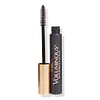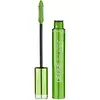L'Oreal Voluminous Volume Building Waterproof Mascara Versus Maybelline Define-A-Lash Lengthening Mascara
What's inside
What's inside
 Key Ingredients
Key Ingredients

No key ingredients
 Benefits
Benefits

 Concerns
Concerns

 Ingredients Side-by-side
Ingredients Side-by-side

Isododecane
EmollientWater
Skin ConditioningBeeswax
Emulsion StabilisingQuaternium-18
Bentonite
AbsorbentCopernicia Cerifera Wax
Paraffin
PerfumingAllyl Stearate/Va Copolymer
Va/Vinyl Butyl Benzoate/Crotonates Copolymer
Dimethicone
EmollientPropylene Carbonate
SolventOryza Sativa Starch
AbsorbentPolyvinyl Laurate
Dimethiconol
EmollientOleamide
2-Oleamido-1,3-Octadecanediol
Skin ConditioningPropylparaben
PreservativeSodium Dna
Skin ConditioningIron Oxides
Ultramarines
Titanium Dioxide
Cosmetic ColorantIsododecane, Water, Beeswax, Quaternium-18, Bentonite, Copernicia Cerifera Wax, Paraffin, Allyl Stearate/Va Copolymer, Va/Vinyl Butyl Benzoate/Crotonates Copolymer, Dimethicone, Propylene Carbonate, Oryza Sativa Starch, Polyvinyl Laurate, Dimethiconol, Oleamide, 2-Oleamido-1,3-Octadecanediol, Propylparaben, Sodium Dna, Iron Oxides, Ultramarines, Titanium Dioxide
Water
Skin ConditioningParaffin
PerfumingBeeswax
Emulsion StabilisingAcacia Senegal Gum
MaskingStearic Acid
CleansingCopernicia Cerifera Wax
Palmitic Acid
EmollientTriethanolamine
BufferingTalc
AbrasivePtfe
Hydroxyethylcellulose
Emulsion StabilisingPEG-40 Stearate
EmulsifyingAminomethyl Propanediol
BufferingPanthenol
Skin ConditioningMethylparaben
PreservativeRayon
Sodium Polymethacrylate
Emulsion StabilisingPropylparaben
PreservativeSynthetic Beeswax
Emulsion StabilisingPhenyl Trimethicone
Skin ConditioningSimethicone
EmollientHydroxypropyl Chitosan
BHT
Antioxidant2-Oleamido-1,3-Octadecanediol
Skin ConditioningPolyquaternium-10
Acrylates/Vp Copolymer
CI 77491
Cosmetic ColorantCI 77499
Cosmetic ColorantCI 77492
Cosmetic ColorantCI 77891
Cosmetic ColorantMica
Cosmetic ColorantCI 75470
Cosmetic ColorantCI 77288
Cosmetic ColorantCI 77289
Cosmetic ColorantCI 77742
Cosmetic ColorantCI 77510
Cosmetic ColorantWater, Paraffin, Beeswax, Acacia Senegal Gum, Stearic Acid, Copernicia Cerifera Wax, Palmitic Acid, Triethanolamine, Talc, Ptfe, Hydroxyethylcellulose, PEG-40 Stearate, Aminomethyl Propanediol, Panthenol, Methylparaben, Rayon, Sodium Polymethacrylate, Propylparaben, Synthetic Beeswax, Phenyl Trimethicone, Simethicone, Hydroxypropyl Chitosan, BHT, 2-Oleamido-1,3-Octadecanediol, Polyquaternium-10, Acrylates/Vp Copolymer, CI 77491, CI 77499, CI 77492, CI 77891, Mica, CI 75470, CI 77288, CI 77289, CI 77742, CI 77510
 Reviews
Reviews

Ingredients Explained
These ingredients are found in both products.
Ingredients higher up in an ingredient list are typically present in a larger amount.
We don't have a description for 2-Oleamido-1,3-Octadecanediol yet.
Beeswax is natural wax produced by honey bees and can be synthetically created. It consists mainly of fatty acid esters and long-chain alcohols.
In cosmetics, beeswax is a emollient. Due to its waxy structure, it creates a protective barrier. This barrier prevents water from evaporating off the skin.
This may not be a good ingredient for oily skin. We recommend speaking with a professional if you have concerns.
Beeswax cannot be removed with water, but can be taken off with an oil cleanser.
Beeswax is also antiseptic and contains vitamin A.
Learn more about BeeswaxCopernicia Cerifera Wax comes from a palm tree native to Brazil; another name for this ingredient is Carnauba Wax.
This ingredient is used to thicken texture and also leaves behind a film when applied.
Fun fact: This wax has the highest melting point of all natural waxes and low solubility.
Learn more about Copernicia Cerifera WaxParaffin is a solid created from petroleum. The term 'paraffin' can also refer to either
petroleum jelly or mineral oil.
It has natural occlusive properties which can worsen oily skin. Due to its petrolatum base, this ingredient is not fungal-acne safe.
Propylparaben is a preservative and is a paraben with antifungal and antimicrobial properties.
This ingredient can be naturally found in plants and insects, but most of it is synthetically manufactured for human use. In cosmetics, it is usually created by reacting para-aminobenzoic acid and propanol (an alcohol).
You can usually find this ingredient in water-based products.
Parabens have come under controversy due to the claim they are hormone disruptors. Studies show conflicting results. We recommend speaking with a professional if you have any concerns.
Propylparaben is commonly found in food, medicine, and cosmetics.
Learn more about PropylparabenWater. It's the most common cosmetic ingredient of all. You'll usually see it at the top of ingredient lists, meaning that it makes up the largest part of the product.
So why is it so popular? Water most often acts as a solvent - this means that it helps dissolve other ingredients into the formulation.
You'll also recognize water as that liquid we all need to stay alive. If you see this, drink a glass of water. Stay hydrated!
Learn more about Water